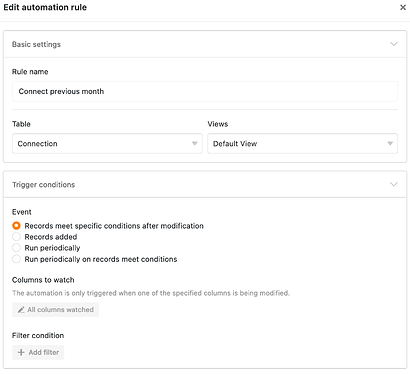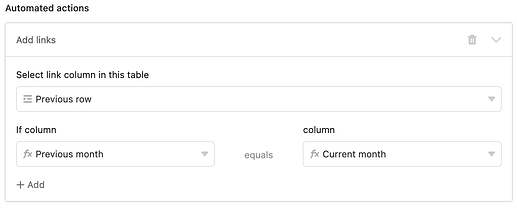Hi! I developed another approach. Here it is, free of charge and full of risk 
Adapt the following Script with the appropriate names:
const tname = 'your_table_name';
const prename = 'your_link_column_for_outgoing_link';
const postname = 'your_link_column_for_reverse_link';
const table = base.getTableByName(tname);
const rows = base.getRows(table,'you_view_name');
const vlinkid = base.getColumnLinkId(tname, prename);
const nlinkid = base.getColumnLinkId(tname, postname);
slinks = new Map();
function onlyUnique(value, index, self) {
return self.indexOf(value) === index;
}
rows.forEach(function(row){
if (undefined != row[prename] && 0 < row[prename].length){
row[prename].forEach(function(id){
if (undefined == slinks.get(id)){
slinks.set(id,new Map([[prename,new Array()],[postname,new Array()]]));
}
slinks.get(id).get(postname).push( row['_id'] );
if (undefined == slinks.get(row['_id'])){
slinks.set(row['_id'],new Map([[prename,new Array()],[postname,new Array()]]));
}
slinks.get(row['_id']).get(prename).push( id );
});
}
if (undefined != row[postname] && 0 < row[postname].length){
row[postname].forEach(function(id){
if (undefined == slinks.get(id)){
slinks.set(id,new Map([[prename,new Array()],[postname,new Array()]]));
}
slinks.get(id).get(prename).push( row['_id'] );
if (undefined == slinks.get(row['_id'])){
slinks.set(row['_id'],new Map([[prename,new Array()],[postname,new Array()]]));
}
slinks.get(row['_id']).get(postname).push( id );
});
}
});
for (let [key, value] of slinks) {
let nach=value.get(postname).filter(onlyUnique);
let vor=value.get(prename).filter(onlyUnique);
if(nach.length > 0){
if (nach.indexOf(key) > -1) {
nach.splice(nach.indexOf(key),1);
}
base.updateLinks(nlinkid, tname, tname, key, nach);
// output.text("To: " + nach.filter(onlyUnique));
}
if(vor.length > 0){
if (vor.indexOf(key) > -1) {
vor.splice(vor.indexOf(key),1);
}
base.updateLinks(vlinkid, tname, tname, key, vor);
// output.text("From: " + vor.filter(onlyUnique));
}
}
output.text("** done **");
In Short, this seeks to complement incoming with outgoing links, and vice versa.
I use this in a table where I create a chain to entries following each other, with a predecessor link from one record to the other (even multiple). The script complements these links: If there is a link pointing to a predecessor entry, the script adds the link to the follow-up item to the said predecessor, and vice versa.
Of course, the initial predecessor link has to be set. I do this automatically in the following way:
- I don’t create a new entry, I just duplicate an existing one. It’s automatically gets added “(copy)” to the primary text column.
- There is a hidden column formula which cuts the “(copy)” part from the name column, so the formula column holds the exact same content as the record that has just been duplicated => predecessor
- The following automation links the newly created entry to its predecessor on the basis of identical texts. Note that there is a bug preventing you from selecting the formula column in the automation rule. See here
After that, run the script periodically to complement the other link direction



